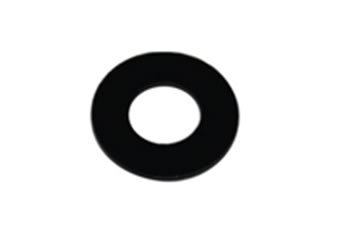
Threaded fasteners don’t always stay in assemblies. They can fall or otherwise work their way out of assemblies. A simple solution is to use push-on retainers. Push-on retainers are retaining rings that slide over the shaft of a threaded fastener. For a better understanding of push-on retainers, keep reading.
Overview of Push-On Retainers
Push-on retainers are retaining rings that are designed to protect threaded fasteners in assemblies from loosening or slipping. They can slide over the shaft of a threaded fastener.
In premanufactured assemblies, threaded fasteners aren’t always secure. A threaded fastener may go through an assembly without a nut to hold it in place. When the assembly is moved, the fastener may fall out. A push-on retainer will secure the fastener in place. Push-on retainers typically feature teeth or grooves that allow to grip the fastener with which they are used.
Benefits of using push-on retainers include:
- Easy to install
- Prevents fasteners from coming out of assemblies
- Holds the assemblies together
- Inexpensive
Push-On Retainers vs Washers
While they are both used in conjunction with a threaded fastener, push-on retainers and washers aren’t the same. Washers are used to distribute the load of a fastener. Push-on retainers, conversely, are used to prevent fasteners in assemblies from loosening or slipping.
Most washers are also flat. There are a few exceptions, such as spring washers, but you’ll typically discover that most washers are flat. Push-on retainers may or may not be flat. As previously mentioned, they typically feature teeth or grooves. The teeth or grooves are found on one side of the push-on retainer. With these teeth or grooves, push-on retainers will resist motion from the fastener.
Washers typically won’t prevent fastreners from loosing or slipping. Rather, they are used to distribute the load of a fastener. To prevent fasteners from loosening or slipping, you’ll need to use push-on retainers. Push-on retainers may look like ordinary washers, but they are used for different purposes.
How to Choose Push-On Retainers
You should consider the size when choosing push-on retainers. Pay attention to both the inner diameter and outer diameter. The inner diameter is the diameter of the hole, whereas the outer diameter is the diameter of the entire push-on retainer — including the hole.
Push-on retainers are available in different materials. Unlike washers, most push-on retainers aren’t made of metal. Rather, they are made of a polymer like plastic. Plastic push-on retainers are inexpensive, easy to use and weather resistant.



